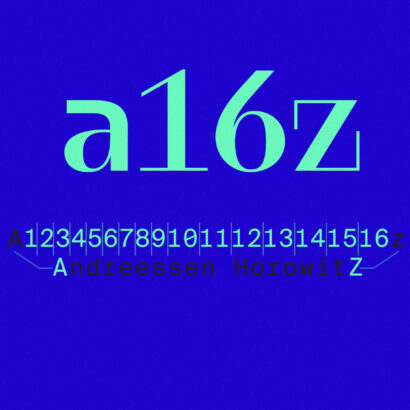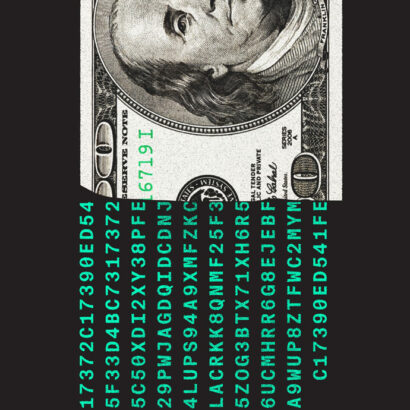Tether is the company behind the most popular stablecoin across the crypto and DeFi space, USDT.
$USDT sits among the cryptocurrencies by market cap, with an over $60 billion in value. It’s supposedly tied directly to the price of the US dollar.
In this post we’ll revisit the stablecoin that could be an elaborate, comically large bounced check.

A Brief History of Incompetence and Suspicious Actions
By looking at Tether’s past scandals, we can speculate why printing $3 billion USDT out of thin air is problematic. As we discuss later, to date they’ve only shown evidence that less than 3 percent of its reserve is backed by actual US dollars.
Tether’s Relationship with Bitfinex
Tether has a close relationship with the exchange Bitfinex, as well as a history of making legally questionable actions leading to plenty of controversies.
Tether may have thought they would evade scrutiny by avoiding regulation.
2017
After Bitfinex was hit with several hacks, there were credible allegations that Bitfinex was minting USDT out of thin air to pay off these losses.
Hilariously, the Chief Financial Officer of Bitfinex admitted to making shell companies and bank fraud on audio in an attempt to quell worries from customers after it was shut down in Taiwan:
“We’ve had banking hiccups in the past, we’ve just always been able to route around it or deal with it, open up new accounts, or what have you…shift to a new corporate entity, lots of cat and mouse tricks.”
Evidence of spoofing is released:
Large orders of BTC are made using USDT, causing the price to rise, before cancelling the order. Later that year, it faced more allegations that Tether wasn’t fully backed by USD and hired Friedman LLP to do a report; while the audit found that Tether was fully backed at the time, it did not disclose the names or locations of the banks holding the USD.
Finally, ending the year with pizzazz, the Paradise Papers revealed that Bitfinex and Tether were run by the exact same people, rather than being a close collaboration!
2018
The US Justice Department was investigating manipulation in Bitcoin markets. Again, Tether was unable to obtain a complete financial audit fuelling more speculation that the Stablecoin was unbacked. Bloomberg reported that federal prosecutors were zeroing in on Tether and Bitfinex for crypto market manipulation.
2019
Tether admitted on their website that the currency wasn’t completely backed by cash.
“Every tether is always 100% backed by our reserves, which include traditional currency and cash equivalents and, from time to time, may include other assets and receivables from loans made by Tether to third parties, which may include affiliated entities (collectively, “reserves”). Every tether is also 1-to-1 pegged to the dollar, so 1 USD₮ is always valued by Tether at 1 USD.”
The New York Attorney General investigated Bitfinex for dipping into Tether’s reserves, after losing access to its payment processor. Reports showed that Tether only had proof that 2.9 percent of its reserve is backed by US dollars.
2021
Tether reached an $18.5 million settlement but had to open up its books. Only around 2.7 percent of Tether is actually backed by USD. They also settled another lawsuit for $41 million for claiming that USDT was backed by cash.
Given all we know about Tether and its sketchy finances, it came as a surprise that they minted more than $3 billion USDT on Tron from late November to early December of 2021. Tether struggled to finish the year without another court case, getting slapped with a class-action lawsuit for misleading investors that its assets were backed by cash.
With the total supply of USDT at around $76 billion (then), it doubles the supply of the next most popular stablecoin, USDC.
Given a quick lay of the land, what’s the big issue with USDT and how does it threaten the DeFi and crypto space?
Staking and DeFi Go Poof?
Trouble for Crypto Banks and Staking
USDT can be staked within crypto banks like Celsius or BlockFi, which provide 8 to twelve percent yield annually. This is done through lending and borrowing protocols. However, if more evidence reveals that Tether isn’t backed by cash or USD reserves it may prove bad news.
The crypto that is deposited into these banks is often uninsured; if the value of Tether tanks because new documents are revealed, then there is a possibility your holdings lose value. It is unclear what may happen to other assets though it is likely their value will also decline.
Bye Bye, DeFi
There may be as much as 5 billion USDT locked into DeFi protocols. The total amount of money locked into DeFi is $148 billion. That means USDT is a substantial player in the DeFi space. In other articles, we discussed how the DeFi system works and of course, with protocols involving high returns, there is a substantial risk.
Across dApps to provide liquidity along with a different partner currency. For example, putting up $1000 in USDT and $1000 in ETH into a lending pool. With yield farming, some protocols may offer upwards of 100 percent yield on the assets. The USDT can also be put into several other protocols to generate derivative coins and earn even more yield.
Let’s imagine that Tether cannot back up all its USDT. People will look to sell their USDT for other stablecoins, but since USDT makes up such a large proportion of all stablecoins in DeFi protocols it will artificially inflate their price as they are now scarcer. But since stablecoins are often used to purchase crypto, the price of these other assets will drop. People may begin to liquidate their Bitcoin as they panic, but there won’t be enough liquidity to cash them out.
Suffice it to say, it may spell the end of a lot of DeFi and drop the value of just about every other crypto asset. Is DeFi robust against this death spiral? If this collapse indeed comes to fruition, we may have a 2008-style DeFi and crypto crash on our hands if there aren’t any safeguards put into the DeFi protocols.
Stablecoins — Actually Pegged to Real Assets
If you’re looking to pick up some stablecoins, steer clear of USDT. The other stablecoins in the Top 100 cryptocurrencies by market cap are superior because they are actually backed by something. We’ll review two of the best stablecoins on the market, both being reliable alternatives to USDT and its shenanigans.
Circle (USDC)
Circle is pegged 1:1 to the USD.
If USDT had a mother that was disappointed in its career choices, it would constantly be talking up the neighbour’s kid down the street, Circle.
The makers of USDC are also registered with the Money Service Business in the United States and actually audited by Grant Thornton. While less popular than USDT, it engages in far less alleged fraudulent activity and to the best of our knowledge, none of their C-Suite executives have admitted to using shell companies or bank fraud.
There are currently 47 billion USDC in circulation, earning the stablecoin a coveted spot in the Top 10 cryptocurrencies by market cap, as of December 2021.
Terra USD (UST)
Terra was a hugely popular stablecoin that was supposedly backed by real assets. It ran on an algorithm that was programmed to keep it pegged to the real-world value of the USD. But it lost its peg and then collapsed suddenly in 2022. It was big news to say the least.
Read all about it here.
Takeaways
Tether ran into hot water again when it minted 3 billion new tokens on the Tron blockchain.
It has a long history of misrepresenting itself in the crypto and finance space, including its claim that all its USDT tokens were backed 1:1 by the US dollar. They’ve been recently hit with a court case because of this deception. There’s also evidence of spoofing, where USDT was used to prop up the price of other assets like Bitcoin.
Plaintiffs in the class-action lawsuit were under the impression that Tether was indeed pegged to USDT, when in fact by 2019 the company admitted that much of their tokens were backed by reserves instead of cash. Despite several attempts at audits, there is only evidence that less than 3 percent of the total 76 billion tokens are backed by the USD in cash reserves.
If Tether collapses, it may mean trouble for anyone staking USDT in crypto banks. But the DeFi space will face the biggest brunt, as much of the activity and smart contracts involve the use of USDT. If Tether dissolves, there is the risk that the DeFi ecosystem could collapse, leading to a drop in Bitcoin prices, and an increase in people cashing out. However, there won’t be enough money to allow everyone to cash out.
Don’t buy or use Tether. Avoid it entirely.
Our stablecoin pick is USDC.





